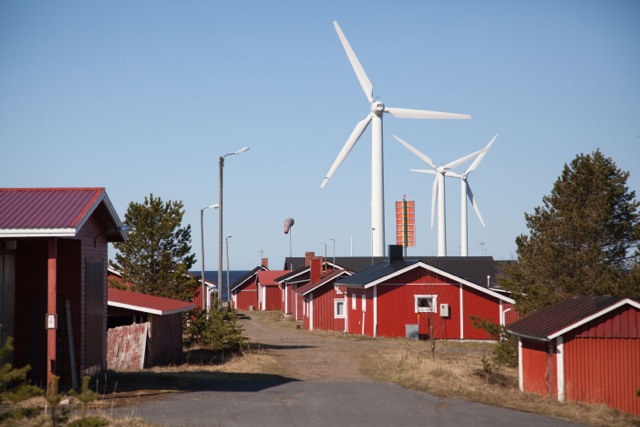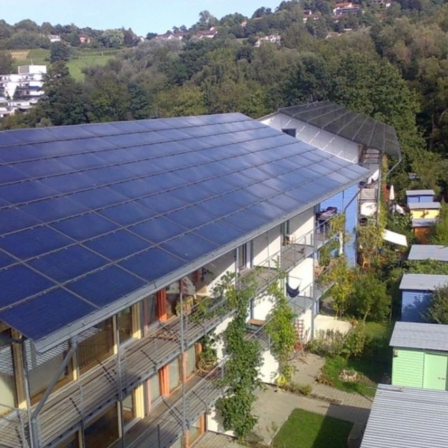Finns are gradually discovering the potential of Local Energy sources, but there is still a need for clearer information and easier investment in this field.
While the urbanisation of Finland has not reduced the appeal of country homes as summer holiday retreats, tens of thousands of Finns are keener than ever to take the comforts of their town homes with them. Lakeside cottage kitchens once fuelled only by log fires are now often fitted with electric lights and kettles, and TVs and PCs commonly occupy the corners.
Sometimes the power used to transfer the comforts of normal home life to Finland’s backwoods comes from Local Energy sources. Finns are increasingly exploiting the ample supplies of extended northern daylight with which the Finnish summers are blessed to harness solar power from their own panels. Electricity-producing small windmills are fitted to cottage yards in more windy coastal locations.
These are still modest manifestations of a trend towards Local Energy that Sitra is keen to accelerate and facilitate. “There is huge potential in Finland for local energy but the interest is actually not as great as it could be if we had a favourable market in place, like in Denmark or Germany,” says Johanna Kirkinen, who acts as an Energy and Climate Change Lead at Sitra.
“The use of renewable energies in general needs to be increased for Finland to meet EU renewable energy and emission reduction targets. At present it’s harder than it should be for individuals or groups to find out about and invest in renewable energy. So we have focused on identifying those needs and developing ways to help.”
Sitra’s focus on information
Local Energy is the term used in this context to describe sustainable sources of power and heat for individual homes, communities or businesses. These sources include solar panels, wind power devices and heat pumps. Many consumers are considering alternative energy options to save costs as bills from “conventional” sources soar, but many are also deterred by the confusing information available. Others might be perplexed as to the most appropriate Local Energy sources to meet their own needs in their own circumstances.
“People are seeking case-specific and turnkey solutions and services for their energy needs,” says Kirkinen. “We have supported developing internet-based information resources that will make it easier for them to choose and decide.”
Kirkinen sees encouraging trends in Local Energy while noting that Finland is lagging behind other countries – especially Germany – in some ways. “Ground heat pump sales in Finland increased by over 70 per cent in the last year. In a recent survey of about 1,500 cottage and home owners, one in four said they had plans for energy renovations within a couple of years.” But Finns need to be more involved in Local Energy planning, she says, so that they stand to gain from the building of wind turbines, for instance, rather than only seeing them as blots on the landscape.
Cutting red tape
Examples of how Local Energy has been successfully put into practice also help to boost the confidence of individual consumers or communities who might be unsure about committing themselves to new solutions. Such examples of innovation and energy savings actions are provided on a Finnish Environment Institute website, HINKUmappi, pinpointing locations in Finland where such measures are being taken. These range from an energy efficient house in Jyväskylä or the switch to LED lighting in a community building in Padasjoki to a change in timing for car heating facilities in Kuopio.
Meanwhile, other renewable energy sources are being explored. “There is potential in Finland for developing biofuels, for instance,” she continues. “The Finnish Forest Research Institute (Metla) and the Technical Research Centre of Finland (VTT) have produced several studies on this. Forest residues and waste from the forest industry are two plentiful potential sources, but they need to be produced sustainably.
“Generally, we need to support those who want to invest in Local Energy,” Kirkinen concludes. “We need to get rid of some of the red tape and make the process easier for individual customers from a consumer perspective.”
Tim Bird


Recommended